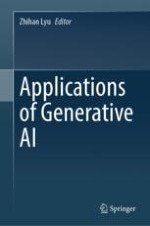2024 | OriginalPaper | Buchkapitel
Generative Models for Missing Data
verfasst von : Huiming Xie, Fei Xue, Xiao Wang
Erschienen in: Applications of Generative AI
Aktivieren Sie unsere intelligente Suche, um passende Fachinhalte oder Patente zu finden.
Wählen Sie Textabschnitte aus um mit Künstlicher Intelligenz passenden Patente zu finden. powered by
Markieren Sie Textabschnitte, um KI-gestützt weitere passende Inhalte zu finden. powered by
